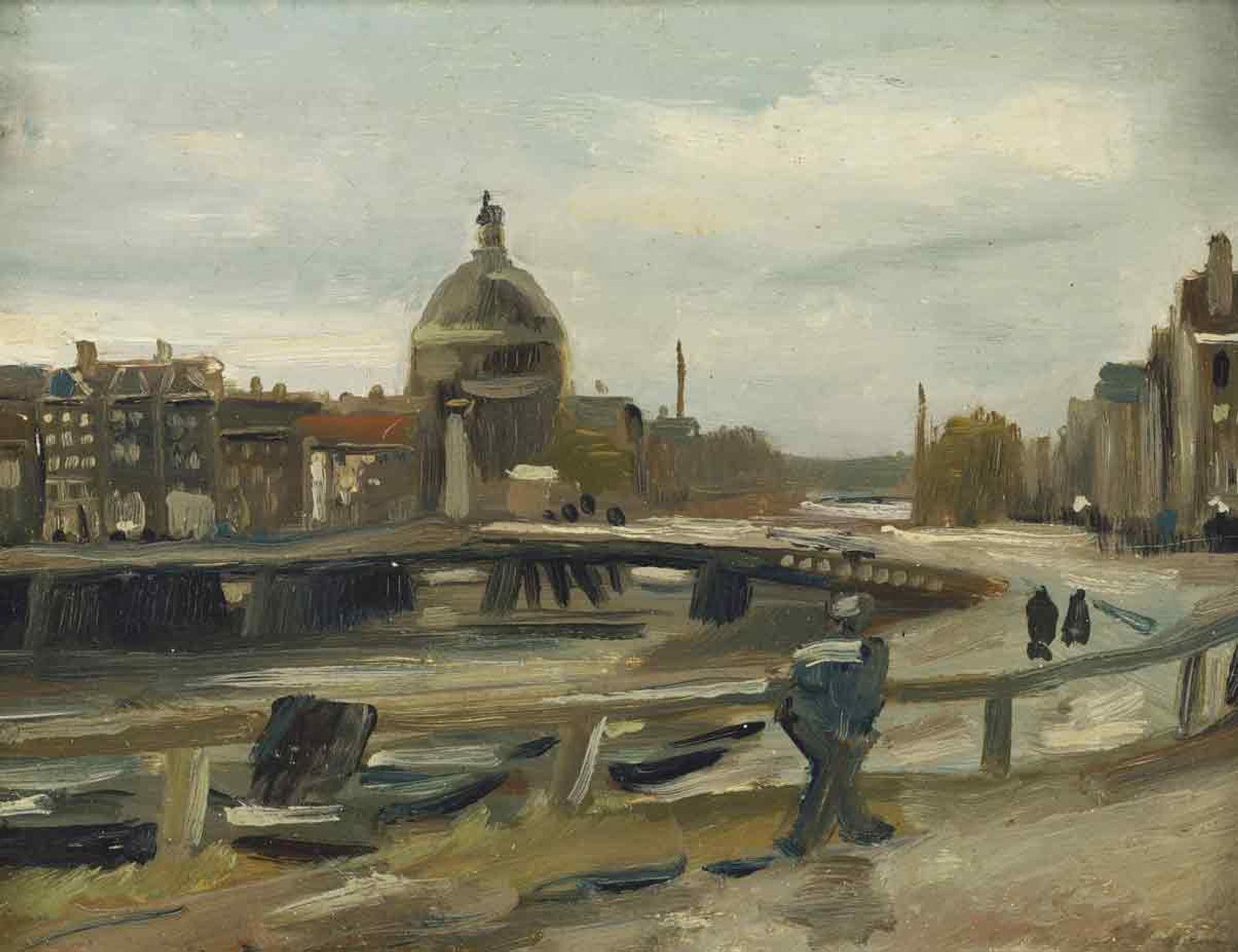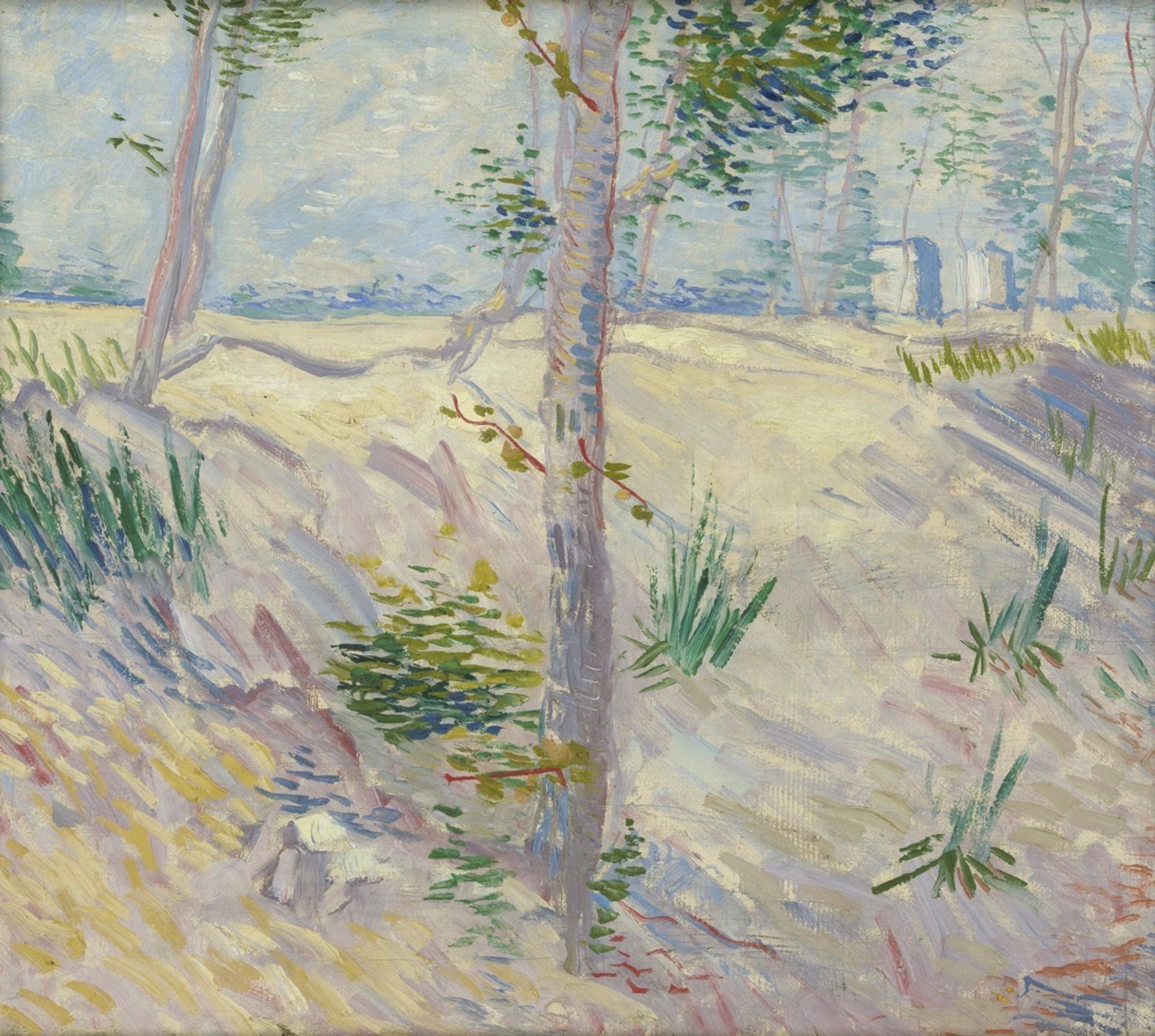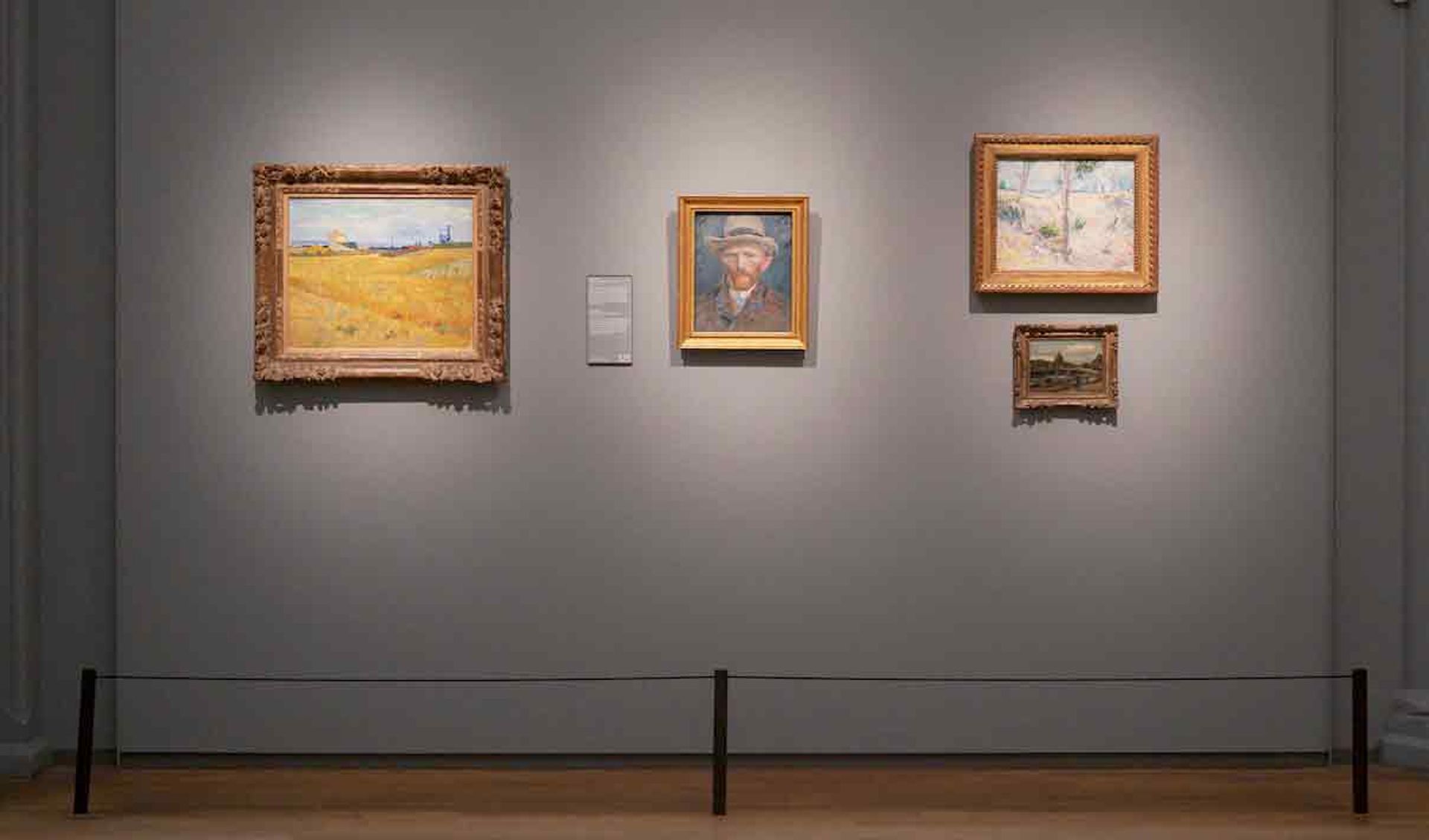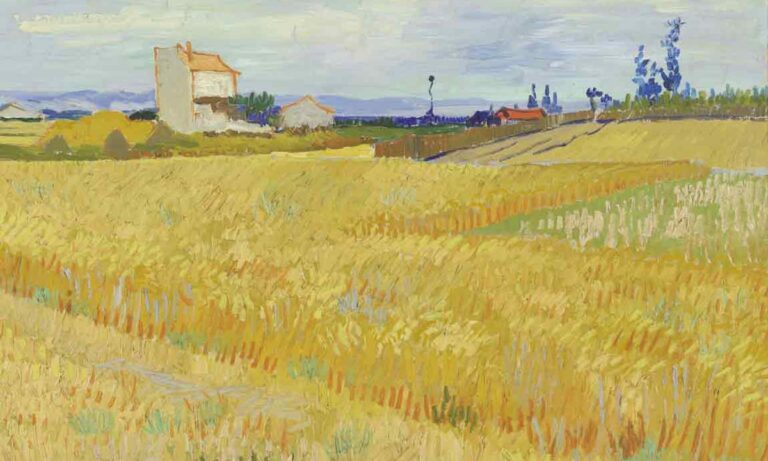by Van Gogh wheat field (June 1888), which is among the artist’s best Arles landscapes, has just been exhibited at the Rijksmuseum. It is one of three images that arrived on long-term loan from the P. & N. de Boer Foundationwhich was created by a family that has been running an art dealer in Amsterdam for just over a century.
In wheat field, the composition is dominated by the varied colors of the crop immediately before harvest. The lively brushwork of golden wheat is set against a complementary blue sky and the narrow band of Les Alpilles hills on the horizon. As Van Gogh advised his artist friend Emile Bernard when he was finishing the picture: “If you do the blue, do the yellow and the orange too.”
Confirmation that the picture was painted outdoors is a stain on the bottom of the canvas. Van Gogh probably caught the wet canvas in his sleeve as he carried it, smearing the paint.

by Van Gogh View of Amsterdam from Central Station (October 1885)
P. & N. de Boer Foundation, Amsterdam
View of Amsterdam from Central Station (October 1885) is the most personal of the three loans, in terms of what it reveals about the artist’s life. Van Gogh had traveled to Amsterdam from his parents’ village of Nuenen in the southern Netherlands specifically to visit the Rijksmuseum, which had opened just three months earlier.
He stayed in Amsterdam for three days and on October 7, 1885 he went to the railway station to await the arrival of his friend Anton Kerssemakers, who was traveling separately from Eindhoven. In a letter to his brother Theo, Vincent explained that he had painted the view from the waiting room, working by a window.
The image was completed in just one hour. “It’s nice to throw in a bit of a rush,” added Vincent. He modestly described the painting as just “an impression,” perhaps a nod to the newly established Impressionist movement.
Kerssemakers later recalled that upon arriving, he immediately saw his friend by the window: “I saw a crowd of people of all kinds, railway guards, workmen, travelers… gathered near the front windows of the waiting room, and there he was sitting. , surrounded by this crowd, in all tranquility, dressed in his furry Ulster [overcoat] and his inevitable fur cap…paying no heed to the loud disrespectful remarks and critical comments of the esteemed audience.”
Van Gogh quickly packed his painting supplies and left with Kerssemakers for the Rijksmuseum. In a letter to his brother Theo, he commented on his visit, mentioning that Rembrandt’s The night guard (1642) was the first work he saw. The painting still hangs in the same position in the center of the museum’s Gallery of Honor, where it remains the most famous work in the collection.
View of Amsterdam from Central Station it depicts two bridges over the Singel Canal, with the dome of the Koepelkerk (the dome church is now part of the Renaissance Hotel) in the middle distance. Although “Central Station” appears in the image’s traditional title, Amsterdam’s grand station was only completed in 1889, and during Van Gogh’s visit the trains stopped in a temporary building in the adjacent Westerdok.
Vincent told his brother that the painting, along with another cityscape, was “quite damaged”. He explained: “They got wet on the trip; then the little panels warped when they dried and dust got into them etc. The Singel scene must have been restored sometime in the 20th century, as the small panel is now in fairly reasonable condition.

by Van Gogh riverside with trees (Spring 1887)
P. & N. de Boer Foundation, Amsterdam
The third painting by De Boer on loan to the Rijksmuseum is riverside with trees (spring of 1887). It depicts a scene on the banks of the Seine on the outskirts of Paris, probably on the north side of the Ile des Ravageurs. Two apartment buildings in Asnières are visible in the background. Vincent gave this picture to his sister Lies.

View of the installation of De Boer’s three loans, around the Rijksmuseum’s Van Gogh self portrait (Spring 1887)
Rijksmuseum Amsterdam
De Boer’s loan to the Rijksmuseum adds significantly to its Van Gogh display (but is completely overshadowed by the enormous collection of the adjacent Van Gogh Museum). Although the Rijksmuseum has five Van Gogh drawings, it only owns two paintings. There is an important self portrait (spring of 1887), which is the centerpiece of the new exhibition (in room 1.18). It also has an early landscape, Farming Village at Twilight (1884), but is on long-term loan to the Noordbrabants Museum in ‘s-Hertogenbosch.
Rijksmuseum curator Mayken Jonkman says that with De Boer’s paintings made in Amsterdam, Paris and Arles “we can now show Van Gogh’s artistic development for the first time”.
Most of the De Boer Foundation’s significant collection of paintings, mostly Dutch works from the 17th century, usually hangs in the family’s gallery in a large house on Amsterdam’s Herengracht. The foundation was created by founder Pieter de Boer (1894-1974), a decade before his death, and is also named in memory of his wife Nellie.
The foundation also owns five works by Van Gogh on paper, although these are not part of the loan: Excavator (September 1881), worn out (September-October 1881), Scheveningen Woman sewing (December 1881), sower (December 1882) and Blue fin mill (spring of 1886).
Niels de Boer, the great-nephew of the gallery’s founder, says that the foundation’s Van Gogh paintings were frequently loaned out for exhibitions, so they could do “with a break” by staying in one place. The loan is for a few years, “with the option of extension”.
Niels adds that the Rijksmuseum is the most suitable temporary home, as View of Amsterdam from Central Station it returns there for the first time since the day it was painted, “with a wonderful story to tell”.
Presumably Van Gogh carried the picture when he walked with Kerssemakers from the station to the museum, depositing it in his cloak or in his luggage. The two men then went up the stairs to see The night guard. Van Gogh would be delighted to know that his little cityscape is back, this time to be honored with wall space in the Netherlands’ largest museum.

